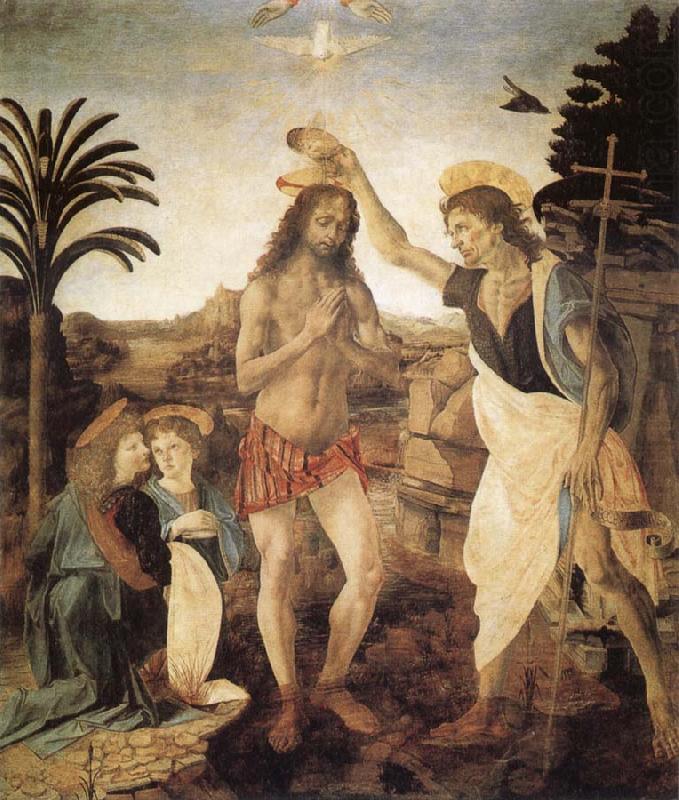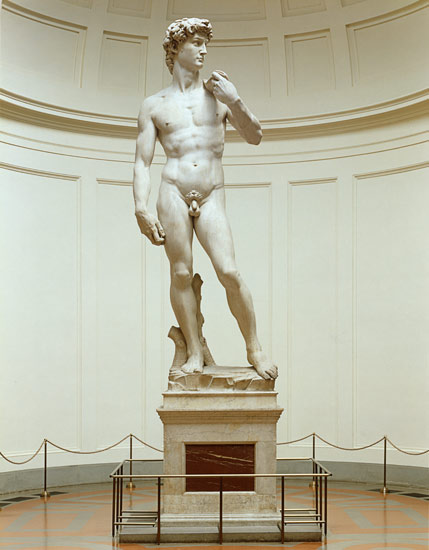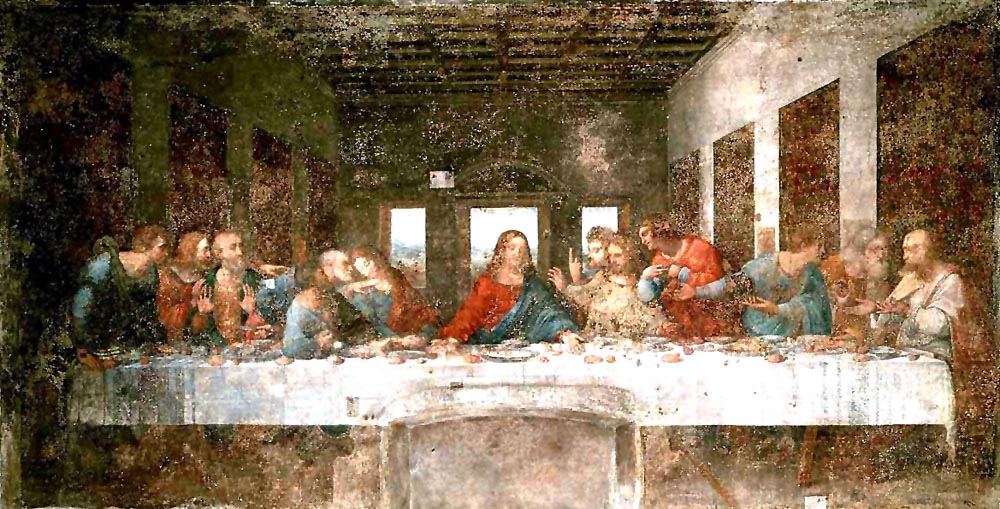Leonardo Da Vinci and Michelangelo.
Leonardo Da vinci
It is difficult understand just how incredibly intelligent this man was. Not only was Leonardo an Artist, he was an inventor of more things than one can even begin to imagine. In fact, Leonardo invented the bicycle, airplane, helicopter, and parachute around 500 years ahead of their time. The amount of pieces of work this artist actually finished, was very limited due to his constant juggeling of different projects and investigations. Leonardo's vast amount of sketches and ability to pay such close attention to detail when studying objects and living beings is why he was such a successful artist.


As this Documentary shows, which i found astonishing was that before and during painting one of his greatest master pieces of all time; The last supper. Leonardo actually took to the streets to study hand gestures and facial expressions of people. Truly studying in depth elements as small as the hands in a painting, such as their shape, how they move and how they work is why Leonardo's work was always so incredibly life like, and like the work of no other artist.

Book: The Art of the Renaissance
Peter and Linda Murray
Peter and Linda Murray
"2oo Verricchio
The Baptism of Christ
He began life as a perfectly traditional apprentice in the shop of the painter and sculptor Verrocchio, and the first accoint of this precious genius is that he painted the left-hand angel in the Baptism (plate 2oo) by Verricchio, and that as a result Verricchio swore that he would give up painting."
215 "Leonardo Da Vinci Last Supper"
Book: The Art of the Renaissance
Peter and Linda Murray
Page 238;
"What is so important in the Last Supper is the way in which Leonardo went far beyond his predecessors in the attempt to render the inner drama of the precise moment at which Christ announced that one of his disciples would betray him."
"Leonardo chose to capture the moment just after Christ tells his apostles that one of them will betray him, and at the institution of the Eucharist. The effect of his statement causes a visible response, in the form of a wave of emotion among the apostles. These reactions are quite specific to each apostle, expressing what Leonardo called the "motions of the mind." Despite the dramatic reaction of the apostles, Leonardo imposes a sense of order on the scene. Christ's head is at the center of the composition, framed by a halo-like architectural opening. His head is also the vanishing point toward which all lines of the perspectival projection of the architectural setting converge. The apostles are arranged around him in four groups of three united by their posture and gesture. Judas, who was traditionally placed on the opposite side of the table, is here set apart from the other apostles by his shadowed face. "
It is interesting to find that the most talked about aspect of the painting is the decision made by Leonardo Da Vinci to paint the moment in which Christ told his apostles one of them would betray him. Before research i thought this painting was so well known and talked about simply because the standard of the painting was so incredible. Its understandable to see why this decision made by leonardo is possibly the biggest factor talked about in the painting, as the painting itself was painted during a time when people had such strong relgious beliefes. As we know the betrayal did happen, it will have been something never recreated in a painting before.
Michelangelo
Although Michelangelo is compared and very often linked to Leonardo Da Vinci it is important to remember michelangelo came about many years after Leonardo. Although michelangalo was an apprentice to Ghirlandaio, meaning he was mainly learning the techniques of fresco painting, he considered himself more a sculptor.
" Often signing his letters Michelangalo schultore in protest at being made to work as a painter" - The Art of the Renaissance, Peter and Linda Murray. Page 273
BBC documentary. The Devine Michelangelo.
Michelangelo Pieta, St. Peter's, Rome

The Art of the Renaissance
Peter and Linda Murray ;
"The problem was to carve a single monumental group composed of the two awkward shapes presented by a full grown man lying across a woman's lap; this he did by a judicious adjustment of the poses, so that the gesture of the virgin's hand is made into an Exposition of the Body of Christ rather than a lament, and, at the same time , Michelangelo was able to relate the two figures in such a way that the disparity in size is not apparent. The group is very highly finished and has a tender sentiment which hardly reappears in his work, but in all this it i the climax of everything that the sculptors of the fifteenth century-the Desiderios, the Minos-had sought."
http://saintpetersbasilica.org/Altars/Pieta/Pieta.htm :
"As she holds Jesus' lifeless body on her lap, the Virgin's face emanates sweetness, serenity and a majestic acceptance of this immense sorrow, combined with her faith in the Redeemer. It seems almost as if Jesus is about to reawaken from a tranquil sleep and that after so much suffering and thorns, the rose of resurrection is about to bloom. As we contemplate the Pieta which conveys peace and tranquility, we can feel that the great sufferings of life and its pain can be mitigated."
http://www.rome.info/michelangelo/pieta/ :
" Michelangelo's interpretation of Mary holding a dead Christ in her arms is remarkable in its devotion to the Renaissance Humanist ideals of physical perfection and beauty. Michelangelo boldly celebrated the intimacy and majesty of a single moment frozen in time, choosing to portray Mary as a chaste and glowing young woman holding the gracefully lifeless body of the Savior across her lap. When we gaze upon this masterpiece it’s as though Mary’s outstretched left hand beckons us to share with her, the profound grief caused by the death of her son."
I completely agree that this sculpture truly represents what the Renaissance was completely based upon. The stunning quality of the sculpture feels as though it adds to this highly religious almost unearthly scene before you. The draping of clothing adds to the heavy emotion and feeling of the scene, as well as emphasising Michelangelo's incredible talent as a sculptor. The fact a scene like this has even been depicted by an artist goes show the Renaissance's characteristics, the way that the viewer can not help but connect with the sculpture and feel deep emotion and pity for whats before them really links with that concept of humanism.
The David
The "David" sculpture was created after the pieta. Yet another of Michelanglos most famous pieces of art, again, representing his immense talent.

The Art of the Renaissance
Paul and Linda Murray
Page 273
"This raw-boned youth, arrogant in his strength and superbly conscious of the inevitability of his victory over his unseen opponent, has always been a sort of ideal Florentine. "
What interests me most, beyond all meaning and the symbolism of the Roman Catholic faith behind this sculpture, is just the immense accuracy of the peice. The fact this sculpture was created from one slab of marble, speaks for itself on behalf of showing the talent this sculptor had. Its really easy to believe that no sculpture as great as this could ever be created again in this day in age. This sculpture is possibly the truest representation of its time, the way the renaissance was built on idealism, humanism and just this incredible passion for creating works of art like no other before it. The sculpture itself in mind blowing in how brilliantly accurate it is, intact i feel its so good i find myself asking the question how could any person create something like this. The masculine and what most would consider as 'perfect' physique of the David strongly puts across this idea of idealism, while lastly the expression of concern on his face and in his eyes creates the feeling of him being human, an expression we too would have upon our faces if we were in his situation; relatable.
This video explains well, the heavy importance of religion and the religious story behind the sculpture of David. It goes to show that this amazing sculpture would not have existed if the Roman Catholic Religion was not of such importance in Italy at this time. After watching this video, i find it interesting to understand that this sculputre was not highly admired just because of its "ideal beauty". " the biblical figure of David was special to the citizens of Florence—he symbolized the liberty and freedom of their republican ideals, which were threatened at various points in the fifteenth century by the Medici family and others."
